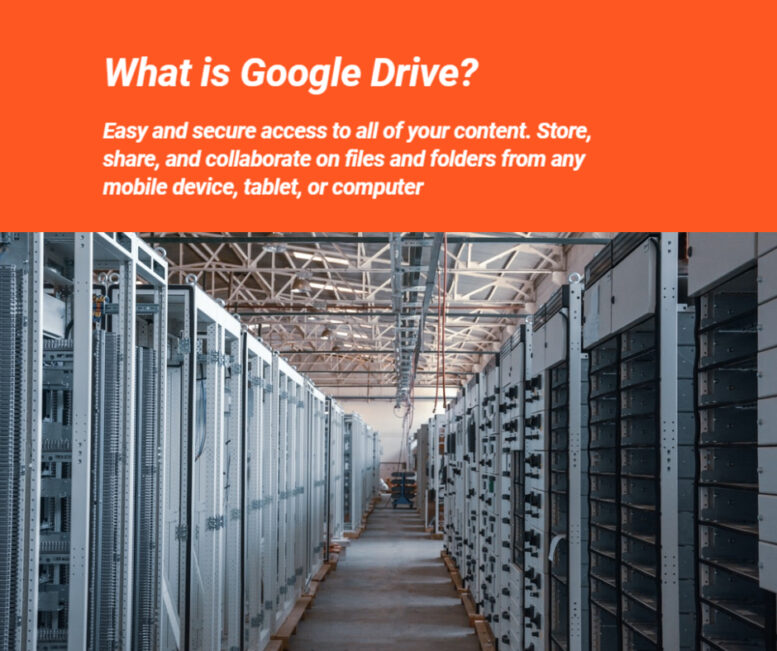Google Drive is one of the free-of-cost cloud-based storage and synchronization services, developed by Google that facilitates you to conserve and access files online. This service syncs all the conserved data like documents, photos, audios, etc across all of the devices the user uses, including mobile devices, tablets, and PCs.
Google Drive is compatible with Google’s other systems and services – for example, Gmail, Android, Google Docs, Chrome, YouTube, Google Analytics, and Google+.
The present competition of Google Drive in the market is Microsoft OneDrive, Apple iCloud, Box, Dropbox, and SugarSync.
How Google Drive functions
To get started with Google Drive, the end-user must have an account on Google. On typing “drive.google.com” into any web browser the user uses – “My Drive” automatically comes up, which can comprise uploaded or synced files and folders, as well as including services like Google Sheets, Slides, and Docs. Once Google Drive is opened the user either can create or upload data from the devices he or she uses.
Google Drive alternatively, even allows its users to download an application of Google Drive to one or numerous devices.
A folder of data that is stored on Google Drive appears along with other folders in each device’s Drive system — which means that files the end-user puts in the Google Drive folder are available on each device through the Google Drive web app or the Google Drive folder.
When you create a file or folder on Google Drive, you will become its owner by default – which is one of the most beneficial points of the service. As a default owner, Drive enables you to control the visibility level of your files and folders, (public or privately distributed with particular Google accounts) and also lets you transfer your ownership to another user using their Gmail addresses. Google Drive also facilitates you to adjust the permissions for both folders and files, using the access levels like “can edit,” “can comment” and “can view.”
What are Docs, Slides, and Sheets in Google Drive?
Google Docs, Google Slides, and Google Sheets are the additional services offered by Google Drive which makes it suitable for office uses. Google Slides is a program for presentation, Google Docs is a word processor, and Google Sheets is a program of spreadsheets – Respectively, they can be compared to Microsoft’s Powerpoint, Word, and Excel. Yet the Google versions lack some abilities that those Microsoft Office applications do have.
Every application in the Drive allows you to build and edit documents, presentations, and spreadsheets that you can preserve in Google Drive or share files in Microsoft Office formats. You can get access to the applications using any web browser including Google Chrome, Microsoft Internet Explorer and Microsoft Edge, Mozilla Firefox, and Apple Safari. Google also provides an option to download all the Drive applications individually, in both Android and iOS.
Formerly, Google Drive included desktop apps for Windows and Mac OS as well, but those ended supporting in May 2018.
Presently, a desktop application named “Backup and Sync” enables users to sync copies of locally stored files to the cloud.
The Drive File Stream for macOS and windows makes it easy for businesses as users to store files online, which prevents sensitive corporate data from storing on their hard drives – damage of hard drives can cause a huge loss of vital data whereas Google Drive is extremely safe as it is a cloud-based online storage and can’t be damaged physically like hard drives.
Primary features of Google Drive
Google Drive is effortlessly compatible with various first-party and third-party outer web applications that users can download from the Chrome Web Store or Android Play Store. End-users are allowed to accept documents, prepare flowcharts, store music files, and finish different tasks using these apps.
To add a third-party app, you can click “My Drive,” then “more,” and “connect more apps.” Generally, third-party apps are free of cost, but sometimes they charge certain fees to use specific features.’

